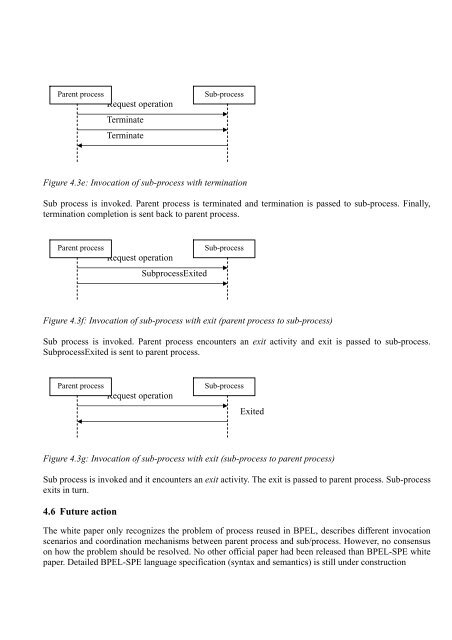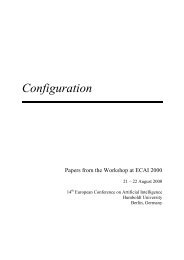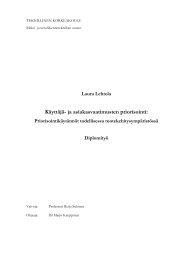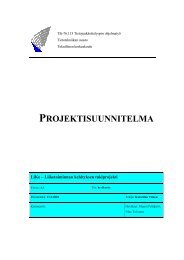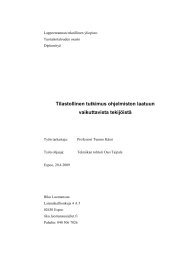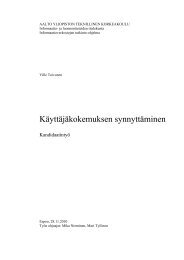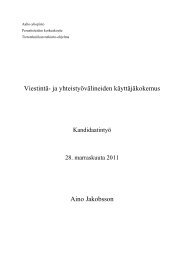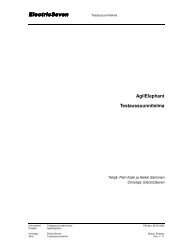An Introduction to BPEL standard and its extentions - SoberIT
An Introduction to BPEL standard and its extentions - SoberIT
An Introduction to BPEL standard and its extentions - SoberIT
You also want an ePaper? Increase the reach of your titles
YUMPU automatically turns print PDFs into web optimized ePapers that Google loves.
Parent processRequest operationTerminateTerminateSub-processFigure 4.3e: Invocation of sub-process with terminationSub process is invoked. Parent process is terminated <strong>and</strong> termination is passed <strong>to</strong> sub-process. Finally,termination completion is sent back <strong>to</strong> parent process.Parent processSub-processRequest operationSubprocessExitedFigure 4.3f: Invocation of sub-process with exit (parent process <strong>to</strong> sub-process)Sub process is invoked. Parent process encounters an exit activity <strong>and</strong> exit is passed <strong>to</strong> sub-process.SubprocessExited is sent <strong>to</strong> parent process.Parent processRequest operationSub-processExitedFigure 4.3g: Invocation of sub-process with exit (sub-process <strong>to</strong> parent process)Sub process is invoked <strong>and</strong> it encounters an exit activity. The exit is passed <strong>to</strong> parent process. Sub-processex<strong>its</strong> in turn.4.6 Future actionThe white paper only recognizes the problem of process reused in <strong>BPEL</strong>, describes different invocationscenarios <strong>and</strong> coordination mechanisms between parent process <strong>and</strong> sub/process. However, no consensuson how the problem should be resolved. No other official paper had been released than <strong>BPEL</strong>-SPE whitepaper. Detailed <strong>BPEL</strong>-SPE language specification (syntax <strong>and</strong> semantics) is still under construction


